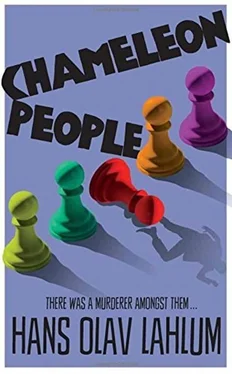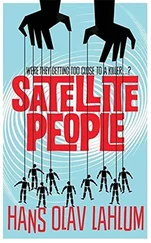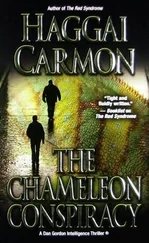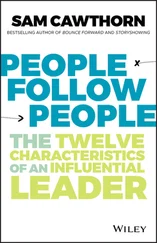Miriam still had two and a half months left until the exam. However, her ambitious perfectionism meant that she pretended to have only two weeks left when, in fact, there were two months, and that she only had two days left when it was actually two weeks. I saw no reason to discuss this here and now, and was without a doubt having a busy day. So I gave it five seconds’ thought and suggested that we meet at the Theatre Cafe for supper at half past six.
‘Deal,’ she said, and put the phone down.
‘Apologies, I had to arrange supper with my fiancée,’ I said.
To my disappointment, I saw no disappointment in Ane Line’s eyes, only greater curiosity. She opened her mouth to say something, almost certainly to ask about my fiancée, but I just managed to pip her to the post.
‘Now, where were we? Yes, the meals that the group from 1932 had are more relevant to the case than my own dinner plans.’
‘Yes, they really are quite something, which only underlines how serious the situation was. The other five from the group who were in Oslo in 1932 continued to meet every five years to mark the day that Eva Bjølhaugen died, at the restaurant of the same hotel. They all hoped that someone might say something that would throw light on the tragedy, Father said, but that never happened.’
‘But, if they met every five years and that was in March 1932…’
Ane Line nodded eagerly again. ‘The date was the fifth of March 1932. So the five last met just a couple of weeks ago. It is rather odd, isn’t it?’
She looked up at me from under her red fringe with bright enthusiastic eyes. I nodded with equal enthusiasm. I still could not see any connection between the forty-year-old mystery and the stabbing of Per Johan Fredriksen on a street in Oslo yesterday. My gut feeling told me that there was some kind of link, but my head could not work out what.
‘Very interesting. I will see what I can find about the case in our archives. Do you know if your father had any contact with the four others from 1932 in between these restaurant visits?’
Ane Line smiled again. ‘Well, I know that he certainly had regular contact with one of them. I don’t even know the names of the other three, so I couldn’t say whether he had contact with them or not. But if you find their names in the archives, I’d be more than happy to answer that.’
Ane Line Fredriksen was clearly more curious than most. And her eagerness and openness were contagious. I picked up my pen to write down the name of the one person that her father had had regular contact with. And then promptly dropped it in shock when the redhead exclaimed: ‘Oda Fredriksen! Eva Bjølhaugen was my mother’s little sister.’
We sat and stared at each other for a few seconds. It seemed to me that she was almost teasing me, and enjoying it, despite her father’s death and the gravity of the situation.
‘So let me get this straight: three young men and three young women went to Oslo together in 1932. The young Eva Bjølhaugen, who was the girlfriend of one of the men, was found dead in her locked hotel room in circumstances that have never been clarified. Your father was engaged to one of the other women, but later married Eva Bjølhaugen’s sister?’
She nodded energetically. ‘Exactly. And it didn’t take long either – Mother and Father got married just eighteen months later. And the five from the group who are still alive have met every five years since, most recently a couple of weeks before my father was killed. Surely that can’t be a coincidence?’
I was open about what I thought: that it could, of course, be a coincidence, but that I very much doubted that it was.
‘Exactly,’ she said, her eyes shining.
As things seemed to be going so well, I took the chance to ask what else her father and mother had told them about this strange old story.
‘Not very much, unfortunately. My father was a kind man, but was quick to put things off. Even when we’ve argued about money in recent years, he has never been mean or harsh with us, just evasive. This old story bothered him a great deal and he did not want to talk about it. I pushed him a couple of times, but he just said that we could perhaps talk about it later. That never happened, of course. Mother was more cagey than Father and completely clammed up when I tried to talk to her about it. She just said that both she and my father had been there, and that they both still wondered what had actually happened, and that it had been extremely painful to lose her only sister like that. I could never get any more out of her. You should ask her about it, she has to tell you now, even if she didn’t want to tell me before.’
I nodded thoughtfully. Then I thanked her for the interesting conversation and asked if I could contact her again once I had looked up the case in the archives. She immediately offered to wait in my office while I looked through the file. We compromised, and she waited outside while I read through the case.
The file from 1932 was disappointingly thin. Initially, it had been marked ‘suspicious death’ and then changed to ‘no case to answer’. My attention was immediately drawn to a couple of photographs of the young woman on a dark velvet sofa. As far as I could see, the woman showed no physical signs of violence or illness of any sort, and was just lying there peacefully, as though asleep. She was slightly shorter than the sofa and had long blonde hair and pale skin. Her body was well shaped, almost like a statue. The photographs made me think of Sleeping Beauty. But Eva Bjølhaugen, born in Sande on 7 January 1911, had never woken up from her deep sleep.
I sat there with the forty-year-old photographs and mused on what secrets she had taken with her to the grave, and what significance they might have for yesterday’s murder.
The reports and statements told me in short that Eva Bjølhaugen had been last seen alive by her boyfriend and four other friends at around five o’clock in the afternoon of 5 March 1932, when she had let herself into her room following a trip into town. And she was found dead in Room 111 at Haraldsen’s Hotel in Ullern at a quarter past eight that very evening. She had arranged to meet the others for dinner at eight o’clock. They had all met in the lobby at the agreed time, and realized that something was wrong when she failed to show up by ten past eight.
Her boyfriend, Hauk Rebne Westgaard, had gone to look for her. Then at twelve minutes past eight he had come back to the others in the lobby. He had told them that the door to her room was locked and he had heard no sign of life when he knocked. Her boyfriend’s concern only increased when he found the key to her door lying on the floor in the corridor, outside his own room.
In his statement, Hauk Rebne Westgaard said that he had been extremely worried about his girlfriend and did not want to enter her room alone. So he ran down to the others and they all entered the room at precisely a quarter past eight to find Eva Bjølhaugen dead on the sofa.
Eva Bjølhaugen’s bed had obviously been used after it had been made up in the morning. But her five companions agreed that there was no sign that anyone else had been there. And the police found no evidence of this either, though they did find fingerprints of all five young people in the room. This was not seen to be suspicious, of course, as they had all been there after she had died, and had also been in there together the evening before. None of them had noticed anything different about Eva Bjølhaugen. She had been in a good mood earlier in the day and generally had an optimistic outlook on life. She had finished school with good grades and had talked about studying languages at the University of Oslo. It was clearly stated in the report that there was ‘no history of depression’.
Читать дальше












